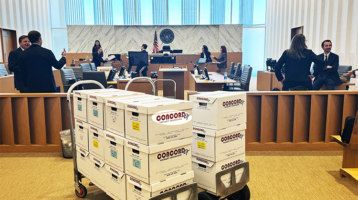Relativity Assisted Review is the flexible and transparent computer-assisted review workflow—also known as predictive coding or technology-assisted review. By amplifying human expertise with powerful technology, Assisted Review serves as a better way to review large volumes of electronic information, reduces risk and cost, and is more accurate than traditional review methods.
HOW DOES ASSISTED REVIEW WORK?
Assisted Review—powered by Relativity’s analytics engine—combines technology and process, allowing you to train Relativity on key issues by coding subsets of documents. It requires three main components—domain expertise, an analytics engine, and a method for validation.
Review teams begin by subjectively coding a sample set of documents. Based on those expert decisions, Relativity determines how the rest of the documents in a case should be marked. You then validate Relativity’s work by manually reviewing statistically relevant subsets of documents to ensure coding accuracy.
Because batches of documents categorized by Relativity are validated using statistics, you can be confident in your results.
Relativity enables case teams to handle complex review projects and tailor their approach to each case. Powerful features like advanced searching options and native imaging enhance workflows to deliver results quickly and accurately.
HOW CAN I USE ASSISTED REVIEW TO IMPROVE MY REVIEW PROCESS?
You can decide how to best use the process to fit your team’s review needs:
- As a method of prioritization to get to the most important documents faster.
- As a way to ignore large batches of non-responsive material.
- As a QC tool to gauge the accuracy of a review.



